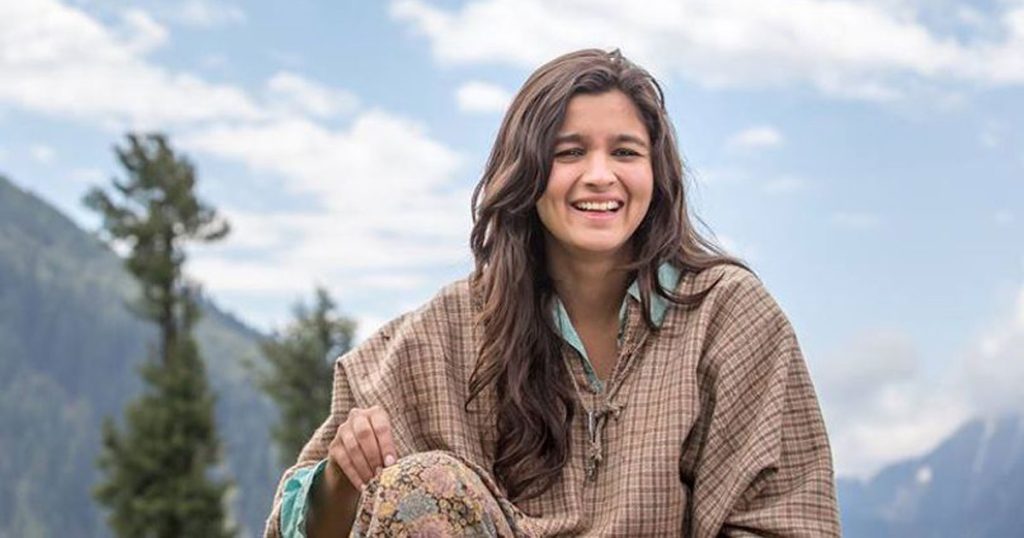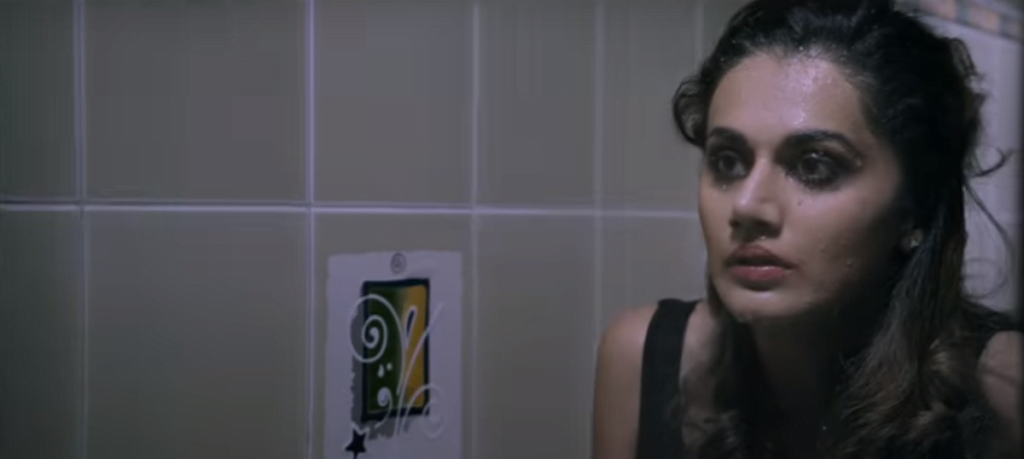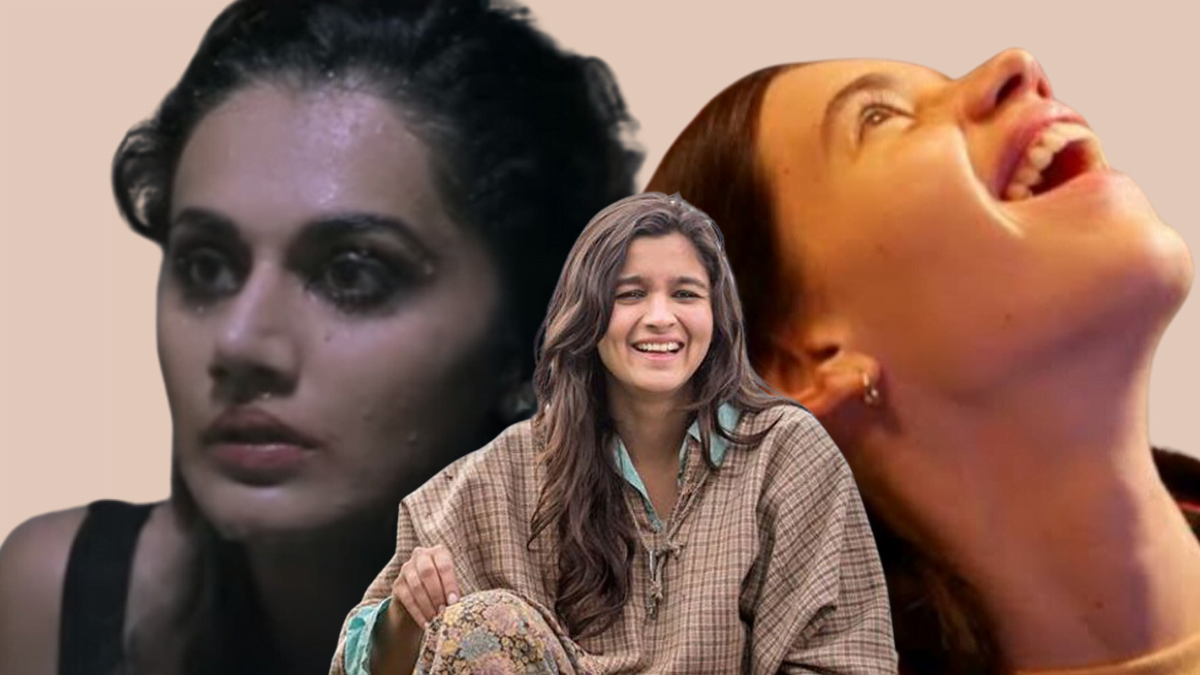Travelling in cinema has been used as a trope that drives the plot forward to the protagonist’s enlightenment and character maturation. The earliest example of this in feminist films is Thelma and Louise (1991). In earlier Hindi films like Sahib, Biwi aur Gulam (1962), the protagonist Bhootnath travels to the city of Calcutta for better career opportunities and through his observation notes the lives of three major strata of society: landlords, wives and servants. Through him, we get to know the historical, social, and cultural influences of Bengal and the rift in Indian society between modernity and traditions.
Similarly, travelling has affected several other genres in Hindi Cinema like horror, the archetypal plot follows the hero or a couple travelling to an isolated villa for a vacation and then the chain of horror unfolds.
From the early 2000s, one can note, travelling as a pattern to show the female character’s maturation. One of the earliest films that elegantly uses this pattern is Dor (2006). In the film, Zeenat initially travels to prove his husband’s innocence, but by the end of the film, her journey proves to have a larger impact. She contributes to Meera’s self-actualisation. She makes Meera realise how the world outside the village can be conquered, helping her to take the bold step to move away from the family steeped in patriarchy and travel to the world beyond.
Women as solo travellers in Hindi cinema
Travel writing and travel literature have often emphasised on solo travelling as a way of learning new skills and moving beyond the comfort of growth. The book Travel as a Metaphor From Montaigne to Rousseau by Georges Van Den Abbeele discusses how in French literature the period of enlightenment through Renaissance in English Literature travel becomes a metaphor for critical thinking, questioning existing orders by taking a “critical distance.” A similar idea is attached to travelling narratives in Hindi Cinema.

Queen (2013), shows Rani’s maturation through her honeymoon trip to Paris and Amsterdam. By deciding to go alone on her honeymoon Rani takes agency of fulfilling her dream to travel to Paris in her own hands. During her solo honeymoon trip, Rani gets the time to re-examine her relationship with her fiance Vijay. She realises that she is capable of pursuing a job. The film also depicts her struggles, as a solo female traveller, as in one of the scenes she is about to get mugged by a man.
Vijalylaxmi who is presented as a substitute for Vijay helps Rani attain her lost confidence after obeying Vijay’s and her family’s every demand. The dynamics of the film promote the idea of solo travels by women. And finding themselves, making friends in a foreign land and broadening their boundary of comfort.
Margarita with a Straw (2014), directed by Shonali Bose also engages with the dynamics of travelling. Laila, the disabled female protagonist, suffers from cerebral palsy and goes to New York, to pursue a course in Creative Writing. Laila explores her sexuality and befriends Khannum and Jerad. Her sexual encounters bring her closer to herself and move beyond the abled body gaze. This change is important for Laila as till the time she remains in Delhi her disability becomes her primary identity marker. Whereas in New York, her personality, talent, and sexuality are recognised markers of her being. Moving away from their home is a fundamental element of these female protagonists’ character growth.
Accidental travels and Hindi cinema
In the film Highway (2014), Veera Tripathi (the character played by Alia Bhatt) gets kidnapped, one day before her wedding. Veera is the daughter of a Delhi-based business tycoon and has lived a fairly sheltered life. Mahabir Bhati and his gang kidnaps Veera. Her travelling experience reveals the deep-seated trauma and child assault she faced when she was nine years old. Her captor’s custody is more freeing than her comfortable house in Delhi. The experience of travelling while evading the police provides her with an opportunity to reflect on her past and begin the healing process from her trauma.

After her journey ends she decides to move away from her home to a place where she can be herself and create her own space. Moving away from home helps Veera’s character grow and come to terms with her childhood trauma as she confronts her family about sexual assault by a male relative.
In one of the recent films, Lapata Ladies (2024), on the train journey from their maternal houses to their in-laws’s house, Phool and Jaya two newlywed wives get exchanged. This exchange of destination by destiny proves an enriching experience for Phool and an opportunity for Jaya to pursue her higher studies. Shoma A Chatterji writes in her book Subject Cinema and Object Woman that there are many ways of seeing cinema as feminist. One strategy is to validate diverse women’s experiences. The second is to “challenge the gender hierarchy, which devalues women.”
Another way could be to unsettle the existing binaries and open new areas of possibility. These films by showing travelling as a trope of reflection, emancipation and self-discovery try to challenge the existing gender hierarchy and unsettle the binaries that limit women’s capability to the domestic sphere.
However, one must note that not all narratives where women are shown making trips away have transformative changes. In the film, Yeh Jawani Hai Deewani, Naina travels to Manali and falls in love with Bunny aka Kabir, after the trip ends both Naina and Kabir part ways. However, the plot only reaffirms that Naina’s wait for Kabir has been fulfilled. Naina might have become more confident on the surface level, but she again is subjective to the male gaze and she finally is now attractive enough for Kabir’s attention.
Everyday travel experience
Another dimension of how Hindi Cinema captures the theme of travel and gender can be seen in films like Guilty (2020) and Pink (2016), wherein the threat to women’s safety within a built environment is explored. Both films are set in the capital city of Delhi and, while travelling the female characters Nanki and Meenal are made to feel unsafe. For instance, in the film Guilty, Nanki’s character while walking towards a metro station in a tunnel finds a masturbating man, she feels threatened and goes back to the law firm and asks Danish to drop her off at the nearest metro station.

In the same vein, when her boyfriend VJ character assassinates her while on a late-night drive in the car, she forces him to stop and get out of the vehicle. As she walks on the empty road at night, a truck passes by and stops. The driver and co-passenger asks Nanki “aaja..ser kara denge,” / “Come I will give you a ride.” While VJ comes to rescue Nanki, she stands and shivers, closing her ears from the nonsense her presence on empty roads creates.
Similarly, in the film Pink, Minal is abducted from her walk on the road in the evening by Rajveer’s friends. They rip her clothes off and threaten to rape her if she does not remain quiet and apologise to Rajveer. The mention of these films is significant as they discuss issues of rape, victimisation, consensual sex and justice. It is important to note the power dynamics between Minal and friends and Rajveer and friends. Rajveer is a nephew of a politician and belongs to upper caste and embodies hegemonic masculinity. Whereas, Minal and her friends are working women who live away from home independently. While the previously mentioned film deals with the dynamics of travelling abroad or away from home as a reflexive and empowering experience, the latter two films show the power dynamics of Indian streets, especially at night.
For women to be able to travel abroad solo or in groups, they first need to feel safe in the built-in environment of their day-to-day lives. The scenes in the film reflect closer to-home reality. A study titled, The impacts of rail transit on the lives and travel experiences of women in the developing world: Evidence from the Delhi Metro, mentions, “participants reported that they feel “relatively” safer in the Metro than compared to other public spaces and transportation modes in Delhi, although harassment persists as a real threat to their journey. Many interviewees, especially young women, were found to employ some types of behavioural strategies to avoid or confront risk during their travels.”

Several other studies on Gender and Transportation have similar findings, they conclude that women opt for public transport like metros, public buses, etc for longer distances and prefer walking for shorter. But, women employ various safety measures especially when travelling alone. Another, study titled Gender, Mental Health and Transportation by R.L Mackett examines the travel behaviour of people suffering from mental illness both men and women. It concludes “For women, the greatest need seems to be policies and actions that will increase their confidence when travelling such as access to staff when assistance is required and clear information when travelling, plus the opportunity to receive travel training.”
Such case studies and cinematic representation hint at both the challenges and aspirations of women travellers. Travelling is a public endeavour that can bring exceptional changes in the idea of being. But within the context of the Indian State, there remain many safety and accessibility concerns for queer and women communities. To make our cities in India and abroad more accessible to females we must incorporate change in urban planning and tourism practices. We must also focus on destigmatising stereotypes and gendered access to temples and religious places, dressing codes, differential treatment of solo female travellers against couples and male solo travellers, and preventing sexual harassment.
Programmes and workshops by private parties or government organisations regarding how to behave to tourists or aid female travellers can help make an impact, especially in a society like India where parents often don’t send their daughters alone on a trip without teachers, family or spouses. The need for a woman to be accompanied by a male companion reflects on the patriarchal public structure.
Lesli Kern reflects on this in her book Feminist City: A Field Guide, “The separation of spaces based on gender meant that production could be aligned with the world of men, and consumption with that of women.” Such is the politics of space and place. These films then not only reflect on the multiple facets of travelling that women experience but also challenge the hierarchical binaries of public and private spaces.
References:
- Gender and class distinction in travel behaviour: evidence from India | Emerald Insight
- Mackett, R.L. Gender, mental health and travel. Transportation 49, 1891–1920 (2022). https://doi.org/10.1007/s11116-021-10231-2
- Kavya Gopal, Eun Jin Shin, The impacts of rail transit on the lives and travel experiences of women in the developing world: Evidence from the Delhi Metro, Cities, Volume 88. 2019,Pages 66-75, ISSN 0264-2751, https://doi.org/10.1016/j.cities.2019.01.008.
- Chatterji, Shoma A.. “Subject–cinema, object–woman : a study of the portrayal of women in Indian cinema.” (1998).




